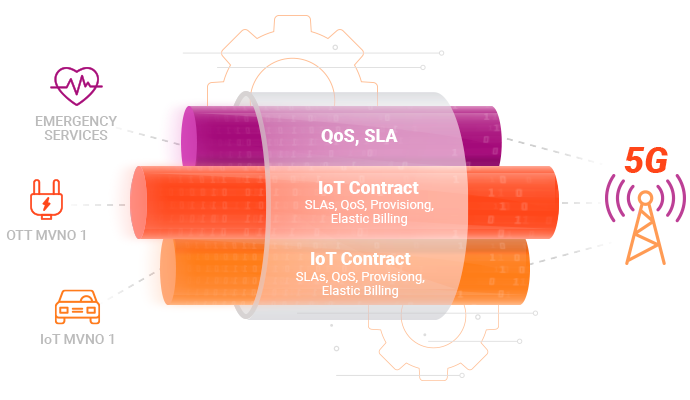The road to 5G and driverless cars: A transformation not without risks

Carlos Marques of WeDo Technologies
Thinking about 5G, and the multitude of new products and services being delivered on top of connectivity, takes me back to those Sci-Fi TV shows we watched as kids and the futuristic gadgets they used. The one thing those shows didn’t provide however,was insight into how to monitor or control the business risks involved with these new technologies. These are important aspects that we must address in today’s real-life Sci-Fi world, says Carlos Marques, head of product marketing & analyst relations at WeDo Technologies.
In the not too distant future, 5G and the innovations derived from these advancements promise to bring us new services such as autonomous cars, connected homes and smart cities. These services will depend on a new benchmark on network efficiency, connection density and innovative applications such as network slicing.
To present the full potential of IoT supported by 5G cellular data and the monetisation possibilities for CSPs, as well as to identify the risks that CSPs will require protection from, WeDo Technologies developed a product demo for a digital ecosystem.
The story goes like this: imagine this not so futurist scenario – where John is excited that his favorite rock band is coming to town and purchases a ticket to the concert. On the night of the event, John uses an app on his phone to access a peer-to-peer ridesharing service (OTT) to reserve an autonomous car that will take him to the concert. John loves this new service and the ability to use his mobile wallet, which is enabled by his communications service provider (CSP). Using the mobile wallet, John reaps several attractive benefits:
- It’s not necessary to enter credit card information in the app due to partner agreements between the CSP and the OTT
- A fixed fee to get to the stadium is provided in advance
- An estimated time of arrival (ETA) is provided due to the connected services that support the autonomous car on its journey
The night doesn’t start out well, as John is unable to unlock the autonomous car due to an error between the ridesharing service and John’s account balance provided by the CSP’s OSS/BSS systems. Additionally, once John finally gets on his way, there are issues with the fleet of autonomous cars receiving the right traffic information from the various smart city applications, which results in John stuck in a traffic jam.
Eventually John gets to the concert, but not without frustration with the multiple service providers related to his autonomous car experience.
In the growing 5G and IoT ecosystem of partners, platforms and services, CSPs will experience increased complexity with billing and transactional data spread across the value-chain. In the case of John not being able to access his autonomous car, provisioning data discrepancies have occurred – likely due to a synchronisation issue somewhere amongst the multiple platforms involved in the transaction. Additionally, these multiple platforms can wreak havoc when event records are misaligned, dropped or possibly not even generated into the revenue stream, creating a perfect scenario for billing and invoice errors, lost revenues and reduced margins.

Smart city and autonomous cars will utilise 5G network slices to provide multiple service levels and custom-made services that require diverse network demands. As in the case of John’s journey, the peer-to-peer ridesharing service would utilise 5G slices for real-time monitoring of traffic management allowing the service to run smoothly, while also calculating an ETA to the concert. When network slices are not closely monitored and deeply related to the services that they support, data errors are missed, and service levels are impacted, creating a negative impact from the partner network all the way through to the end customer.
To protect these new digital ecosystems from revenue and margin losses and ensure a satisfactory customer experience at the partner and end-customer levels, CSPs will need a risk management system that understands all the variables of each partner contract, including monitoring real-time service usage, QoS, QoE, and provisioning of concurrent slice instances. This not only ensures that network capacity is delivered as agreed and everyone pays for what they use, but also assures the value chain is protected from the CSP connectivity through to the end user that receives access to a service.
These virtualised environments will require BSS solutions that are both flexible and programmable, while also able to immediately capture any type of chargeable event. As modern business support systems (BSS) should be able to respond in real time and accommodate new billing events, so should the risk management and auditing tools.
Billing validation with AI and machine learning capabilities to guarantee the correct monetisation of demanding connectivity services, such as V2X (vehicle-to-everything), should fully understand service level agreement (SLA) breaches between partners as well as temporary slice allocation and provisioning in order to meet the accuracy of real-time billing. Auditing the policy-based charging will be central to billing functions in order to determine how quality of service and SLAs will meet agreed upon charging contract terms.
As part of a 3-part series, next week we will join Alice, who is also interested in seeing this band. Alice’s service provider also experiences order management, quality of service and related risks to revenue realisation, but in a different context.
The author of this blog is Carlos Marques, head of product marketing & analyst relations, WeDo Technologies
Comment on this article below or via Twitter @IoTGN
